
A quick look back at the duo exhibition It’s a new dawn, it’s a new day with Matteo Montani, which opened last week in the new premises of the Luisa Catucci Gallery in Berlin Mitte, fills me with a lasting feeling of bliss. The gallery rooms were filled to the brim; The doors opened at 5 a.m. and numerous visitors streamed in.
The response to our exhibition was overwhelmingly positive; the audience was remarkably enthusiastic about the curation and interaction of our works.
I also found the visual communication between Matteo and me to be a successful and fascinating new perspective on dialogue. It’s fascinating how we complement each other in terms of color and design, while everyone follows their own artistic path. The way Luisa Catucci put the works together surprised and inspired me. In the studio, the works are usually created at the same time and not one after the other, so I usually only get to know/perceive works from different creative phases and the potential of their combination in a different context outside of the studio. For me, every exhibition is a snapshot, a short stop in an ongoing series of works. There is no end; Every exhibition is a step on my artistic path.

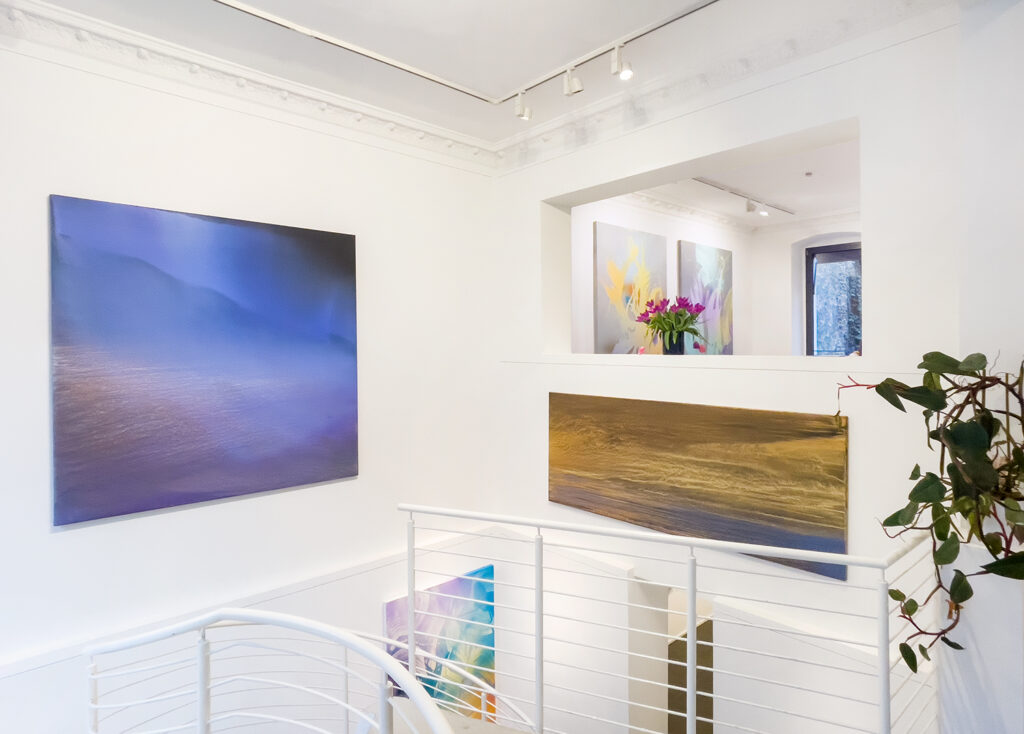

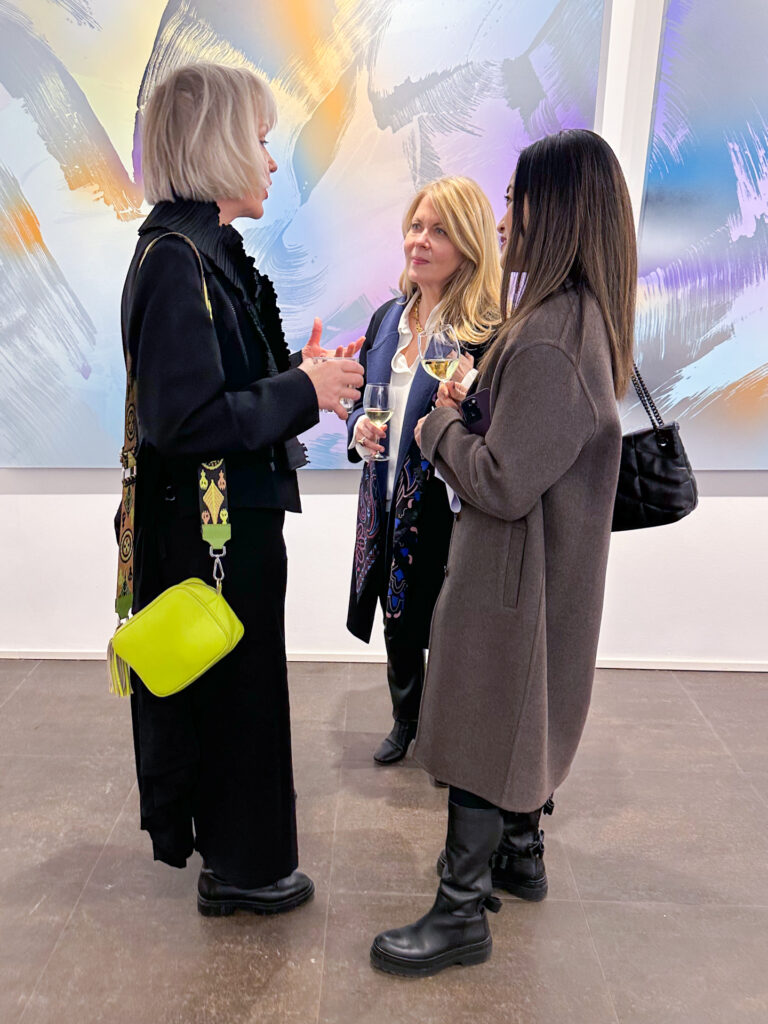

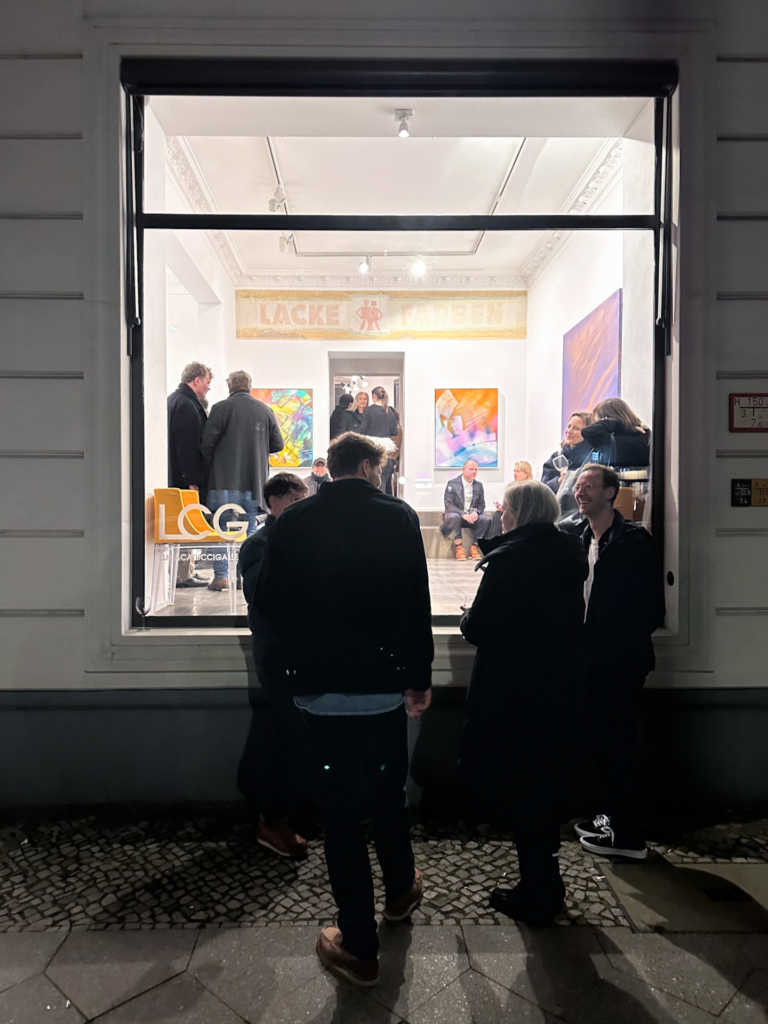



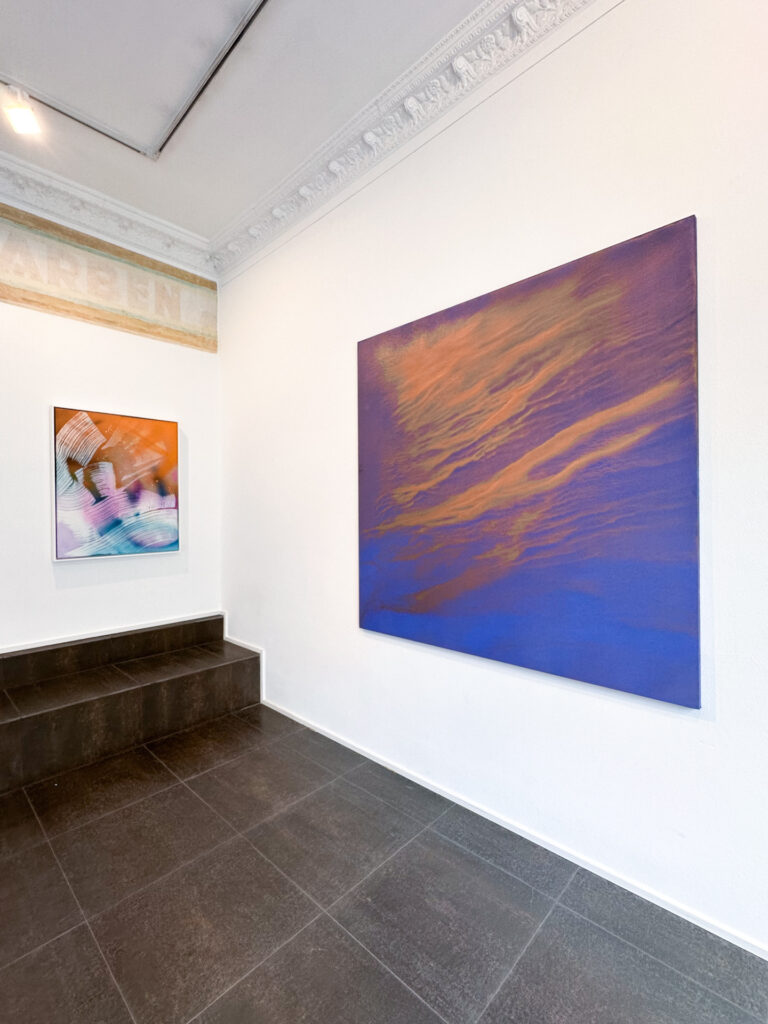
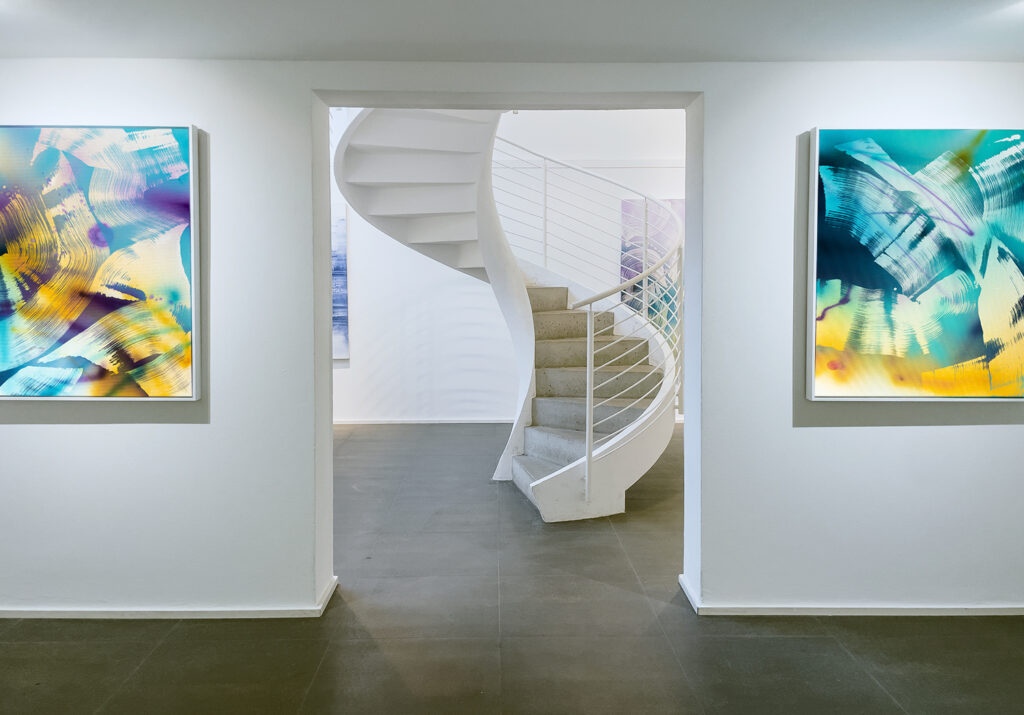
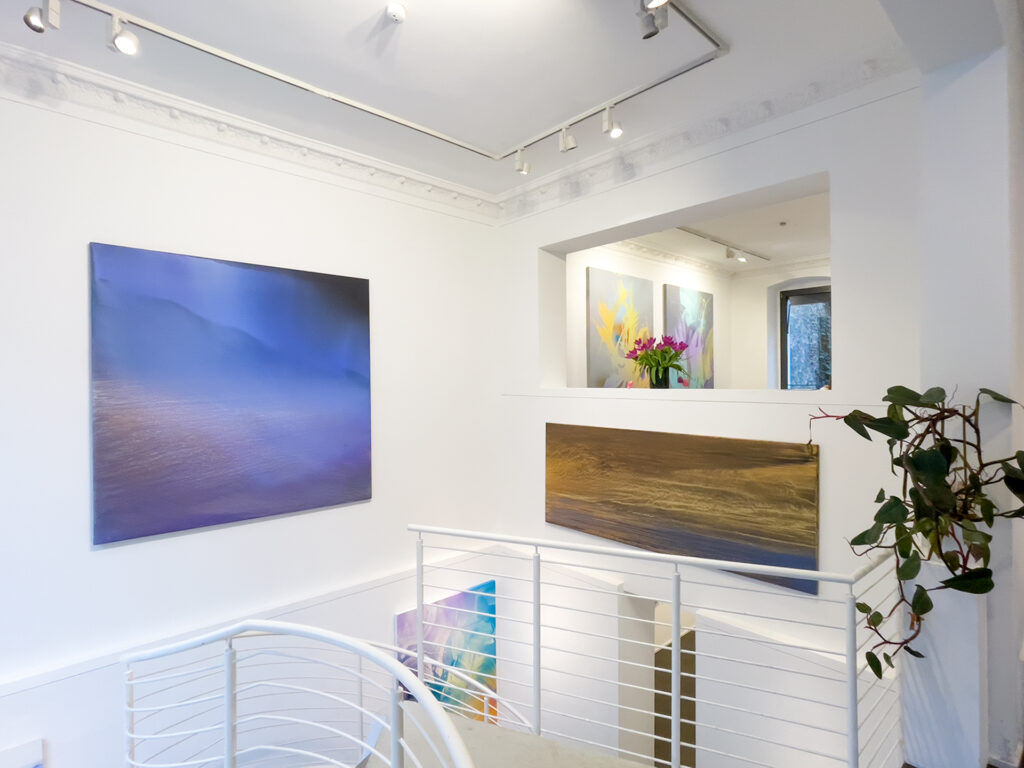
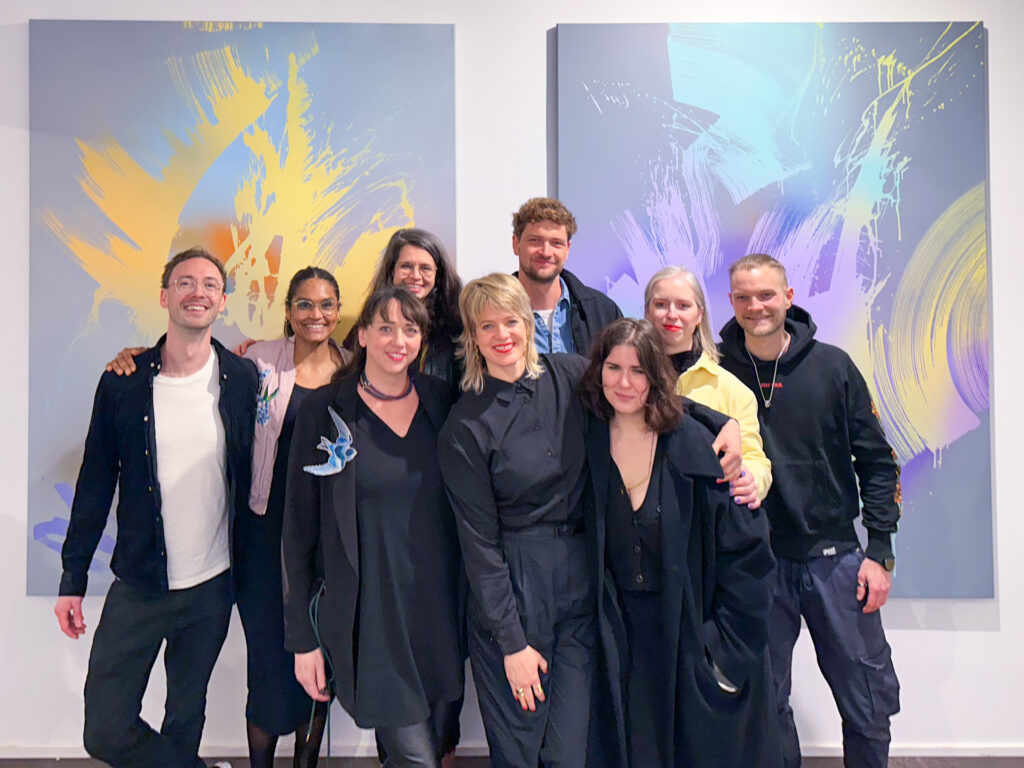

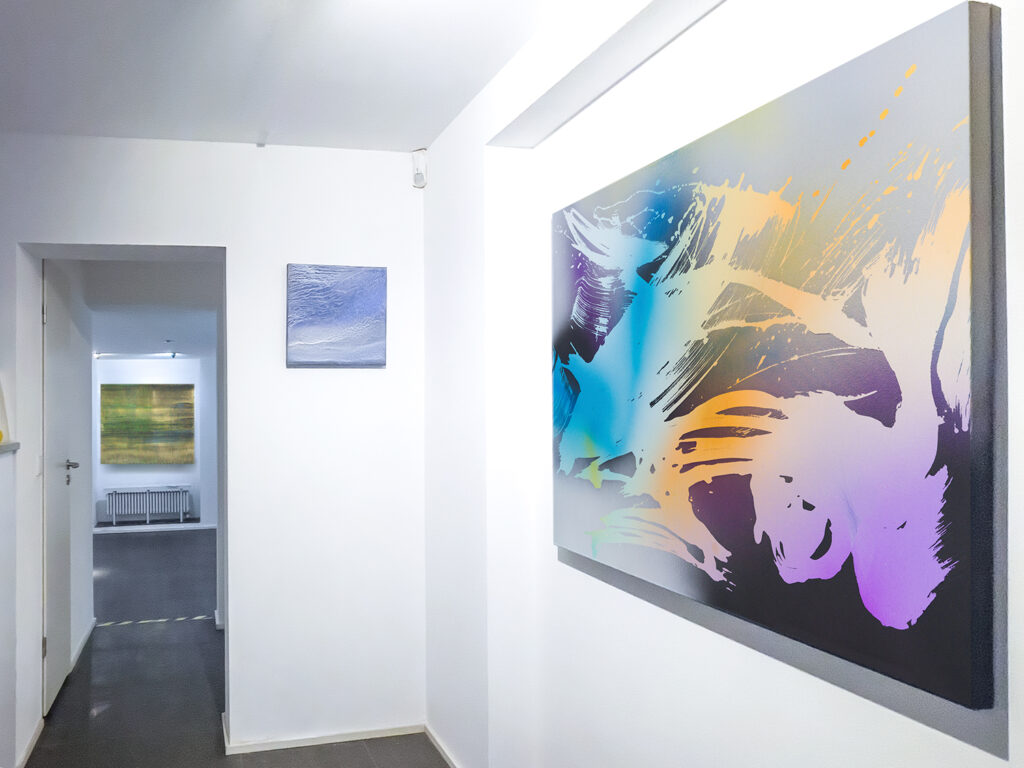
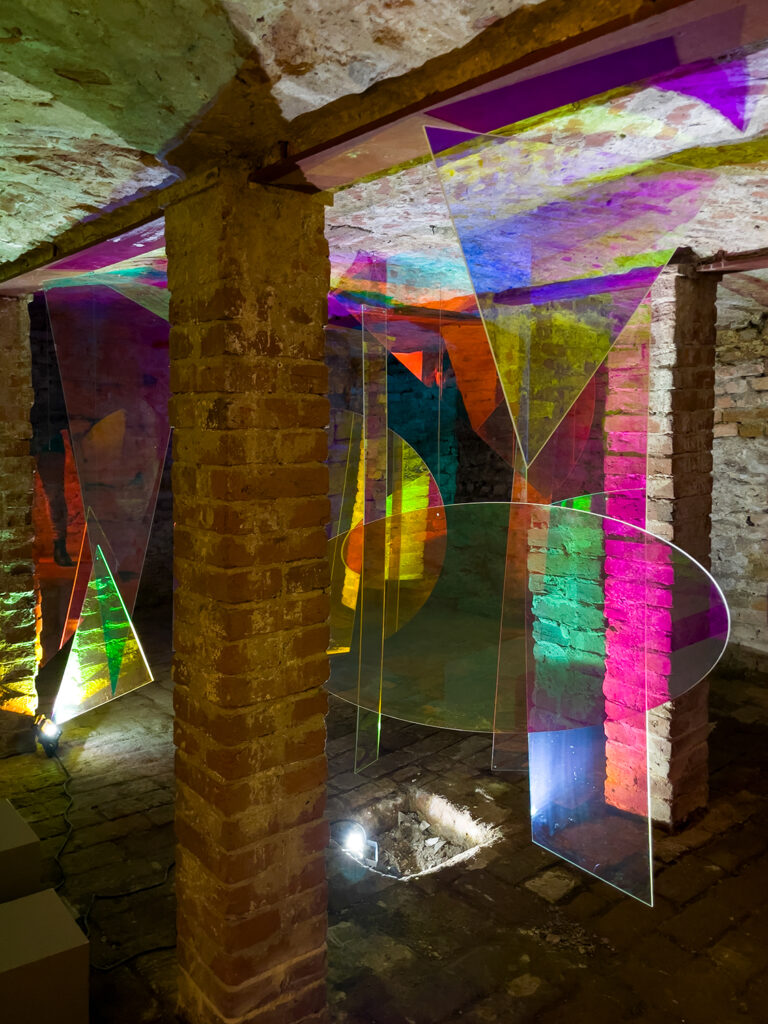
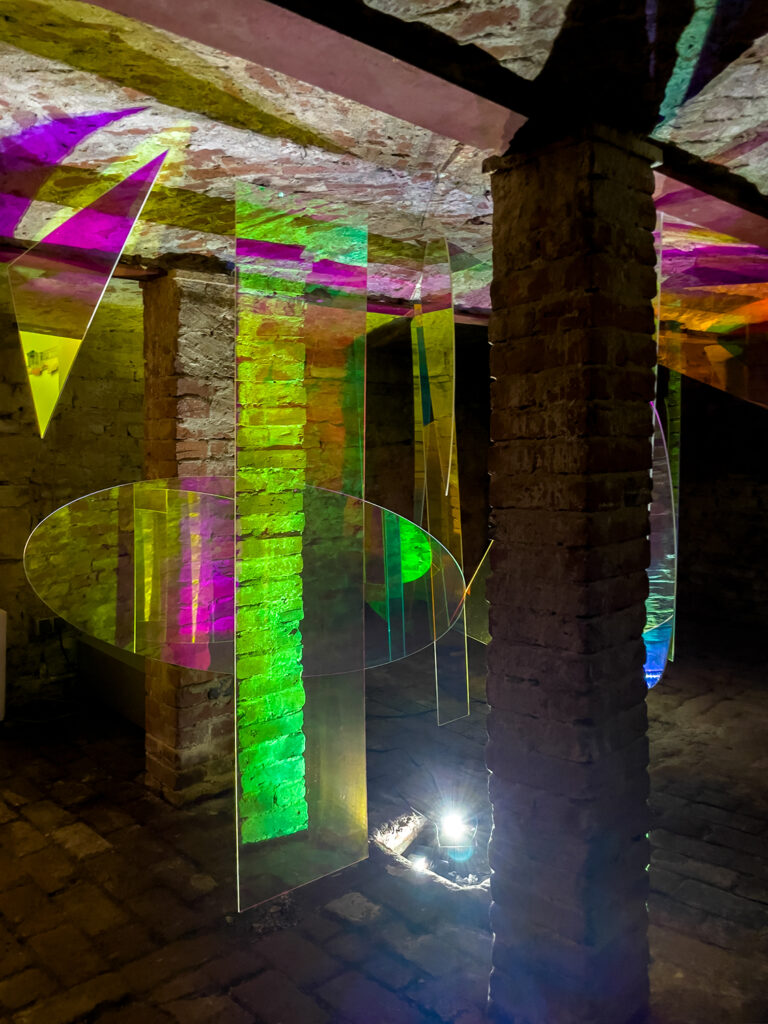

Matteo Montani’s evocative paintings convey the idea of landscapes as emotional experiences, taking the haunting qualities of skies and seas from the Romantic era to a contemporary stage by depriving them of any reference to a real, earthly place. In an almost abstract expressionist way, the artist dares to look beyond the traditional confines of reality and harnesses the skies as a means of expressing the intangible, the inexplicable, and the transcendent. The only reason to call Montani’s paintings landscapes is cultural. Viewers automatically register his format as a landscape, but at the same time, they are called to contemplate the vast enigmatic expanse of his non-places, where literal figuration is lost to the masterful use of colors and lines. Each painting is an invitation for the viewer to engage with their emotions, to feel the depth and subtlety of color and texture’s resonance.
The artist’s use of color is not haphazard but a meticulous orchestration: his transitions from dark to light, from warm to cool, evoke a profound sense of depth and motion. One can feel the energy and contemplation in their juxtaposition.
Strongly inspired by the lights of dawn and dusk – times of transformative transition both physical and emotional – and by the perpetual becoming of things, Matteo approaches his painting practice almost as an alchemist due to his peculiar technique, requiring scientific and chemical knowledge of the elements used, such as sandpaper, metal powders, oils, turpentine, and the pivotal role of the artist’s movements.
Montani approaches his work in the studio comprehensively, utilizing every available surface, moving freely within it, and fully expressing his gestural tendencies, imprinting even the slightest variations on the support. In more recent times, he started working directly on canvas, exploring the possibilities of this surface, and looking for new ways to intervene on this material coherently to his way of working, like creating movement using air.
The composition is in any case discovered through action, where the movements are supported by scientific knowledge of the elements and their reactions, allowing room for a “natura naturans” kind of surprise, where “nature does what nature does.”
The artist becomes an actual “force of nature” working on the piece in union with the other forces – including chaos – binding the painting to natural laws.
The use of turpentine and oils makes the sandpaper conquered and dominated by evanescent clouds, creating cosmogenic and enchanting effects of ethereal vapors. The metal powders, balance the composition by creating heavy counterpoints, fundamental to grounding the work and bringing it back to an earthly dimension.
Impressed in Matteo Montani’s works, there is a harmonious combination of various upward movements, akin to vapor or mist, downward movements like rains or precipitations, and lateral movements typical of winds, each movement emphasized by the masterful color palette. This offers the viewers an immersive emotional experience, enhanced by the artist’s choice to work mainly on a large-scale format. In this way, Matteo Montani’s works truly serve as portals through dimensions situated “between the eye and the soul, an unknown place that we could define as the rift between the physical world and the spiritual, in its dissolving” taking the observers on an emotional journey of self-discovery and universal interconnectivity.

The artistic approach of Julia Benz embodies the essence of contemporary paintings of new generation. The young German artist firmly rejects the distant coldness and often associated rationality of theoretical paintings and rigorous artistic formalism. Her quest for a new and expressive freedom in painting is dramatically direct, pushing beyond the traditional aesthetic boundaries of both composition and support. The deliberate use of unconventional color palettes – sometimes almost cacophonous – is crucial in defending the artistic intent behind Benz’s works. Additionally, Julia needs to infuse dynamism into the fascinating and intricate worlds of her artistic creations, achieved through strong, gestural brushstrokes intervening explosively, passionately, and sometimes angrily on the polished backgrounds.
The unabashed use of colors and the dissolution of concrete forms into abstract images play a central role in her work. “Colors are emotions to me. They both shock and fascinate me simultaneously, constantly urging me to navigate between the dominance of colors and the sensuality of painting,” says Benz. It is precisely this ambivalence that forms the core of her artistic exploration, overlapping, transforming, or dissolving chromatic surfaces with their own supports, often made of unconventional materials such as plexiglass or mirrors. The intention is to capture fleeting moments in the pictorial image, in a contemporary key.
In her artistic journey, Julia Benz has consistently pushed beyond the constraining format of the canvas, venturing into site-specific installations and murals that allow her to create immersive works. Presented in the “Ipogeo” of the gallery is a reinterpretation of the site-specific installation “Floating Spheres,” previously exhibited at Hošek Contemporary, the iconic art-boat in Berlin-Mitte. This installation, made of transparent colored and dichroic panels of various geometric shapes suspended and mobile, elevates color to an undisputed protagonist. The interaction between light and material independently transforms the appearance of the installation, responding to the interaction with visitors. The space is radically transformed, becoming a kind of perceptual portal that connects the observer with a dimension of metaphysical dreamlike flavor, similar to the observation of the Northern Lights.
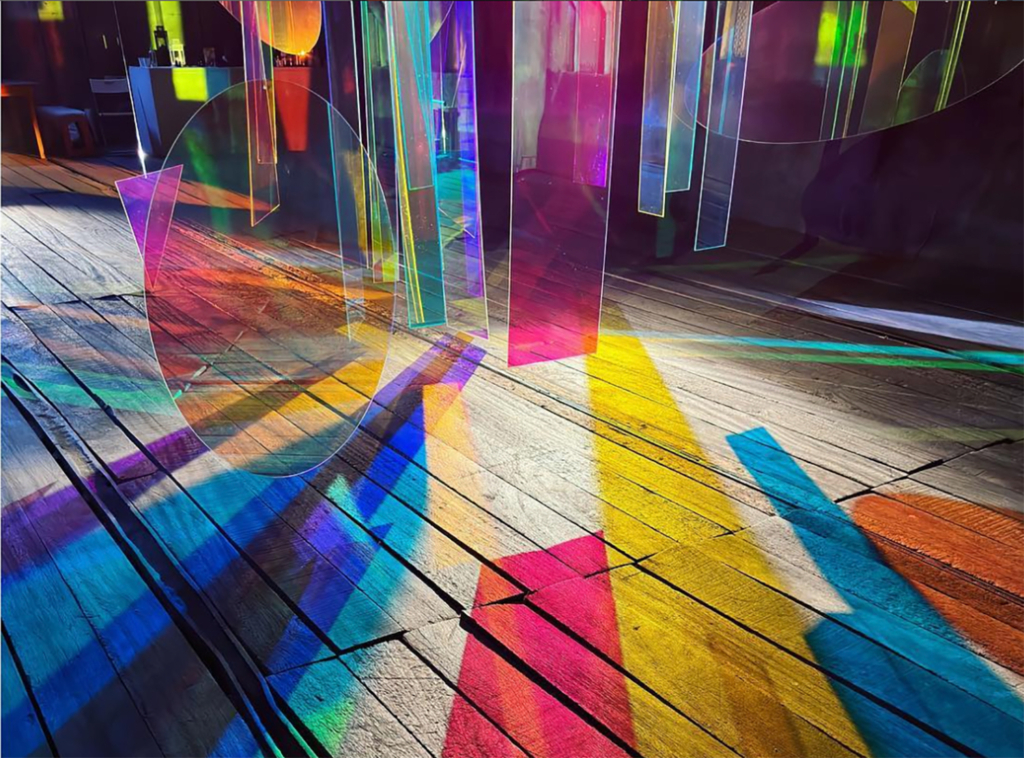
©2023 Julia Benz